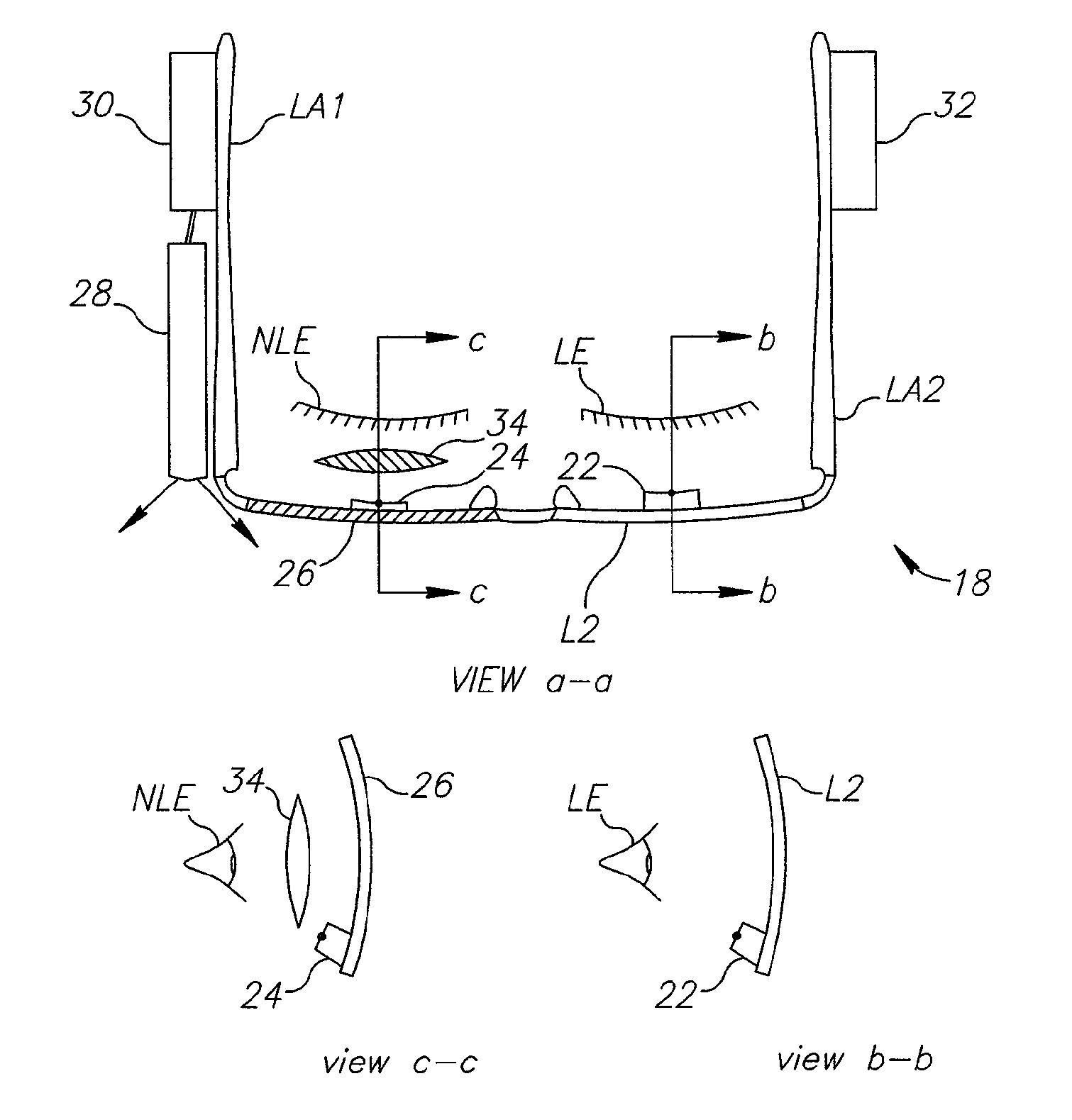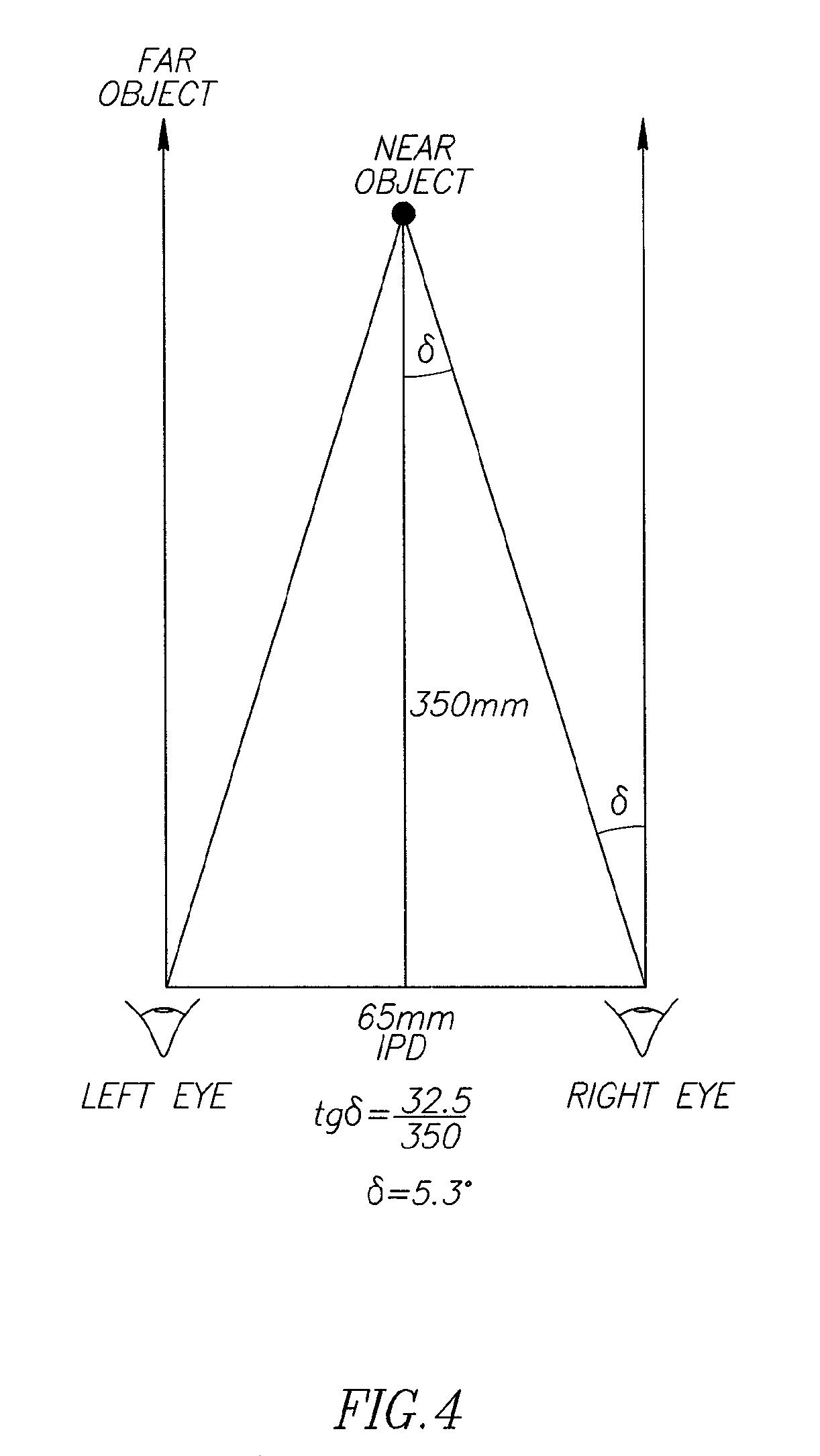Method and system for treatment of visual impairment
a visual impairment and treatment method technology, applied in the field of ophthalmology, can solve the problems of partial or full paralysis of the non-leading eye, misalignment between the eyes, and the normal way the human eye stares at objects in the normal way,
- Summary
- Abstract
- Description
- Claims
- Application Information
AI Technical Summary
Benefits of technology
Problems solved by technology
Method used
Image
Examples
case # 1
[0109]Case #1:
[0110]The case refers to a situation when a patient's left eye is the leading eye and patient's right eye is the non-leading eye. The non-leading eye still is able to perform some limited movements.
[0111]In FIG. 8 configuration of the system is shown as a block diagram. The block diagram suitable for this case includes those components which have been already mentioned above in connection with FIGS. 6a, 6b.
[0112]It is seen that lens L2 is located in front of leading eye LE. The lens L2 is a conventional lens. If the leading eye has no focusing problem, the diopter number prescribed for that lens can be zero. In all other cases, the diopter number of the leading eye lens L2 can be prescribed by optometrist. Through this lens, the patient leading eye has an unobstructed view of the scene such that it can see for example an object 38 in front of it.
[0113]First eye tracker 24 is located in the lower portion of the leading eye lens L2 so as not to obscure the leading eye v...
case # 2
[0120]Case #2:
[0121]This case refers to a situation when patient's left eye is the leading eye and the right eye is the non-leading eye and the non-leading eye has full paralysis.
[0122]The block diagram of the system suitable for treatment of this case would be basically the same as seen in FIG. 8. However, in this case the second eye tracker would not be required since the non-leading eye is fully immobile due to paralysis and its direction is fixed with reference to the head's direction. Accordingly the gazing angle α of the non-leading eye is known in advance and it can be taken into consideration in all calculations necessary for correcting angular deviation between leading eye and non-leading eye.
case # 3
[0123]Case #3:
[0124]This case addresses to a situation when both eyes of the patient gaze in abnormal directions (i.e. alternating strabismus, nystagmus etc.).
[0125]The block diagram of the system is shown in FIG. 9. It can be easily seen that it is basically similar to the system presented on diagram seen in FIG. 8.
[0126]Accordingly the similar components are designated by similar reference numerals. However, configuration of the system suitable for treatment of this case would require an additional video camera 40 positioned near the leading eye and an additional wide angle display device 39 positioned in front of the leading eye.
[0127]An additional eyepiece lens 42 could be provided in front of the leading eye.
[0128]It is designated by straight lines the directions of virtual view between cameras and the object, as well as the directions of required view between the eyes and the object.
[0129]A non-limiting table below summarizes the possible hardware configurations of the system ...
PUM
 Login to View More
Login to View More Abstract
Description
Claims
Application Information
 Login to View More
Login to View More - R&D
- Intellectual Property
- Life Sciences
- Materials
- Tech Scout
- Unparalleled Data Quality
- Higher Quality Content
- 60% Fewer Hallucinations
Browse by: Latest US Patents, China's latest patents, Technical Efficacy Thesaurus, Application Domain, Technology Topic, Popular Technical Reports.
© 2025 PatSnap. All rights reserved.Legal|Privacy policy|Modern Slavery Act Transparency Statement|Sitemap|About US| Contact US: help@patsnap.com



